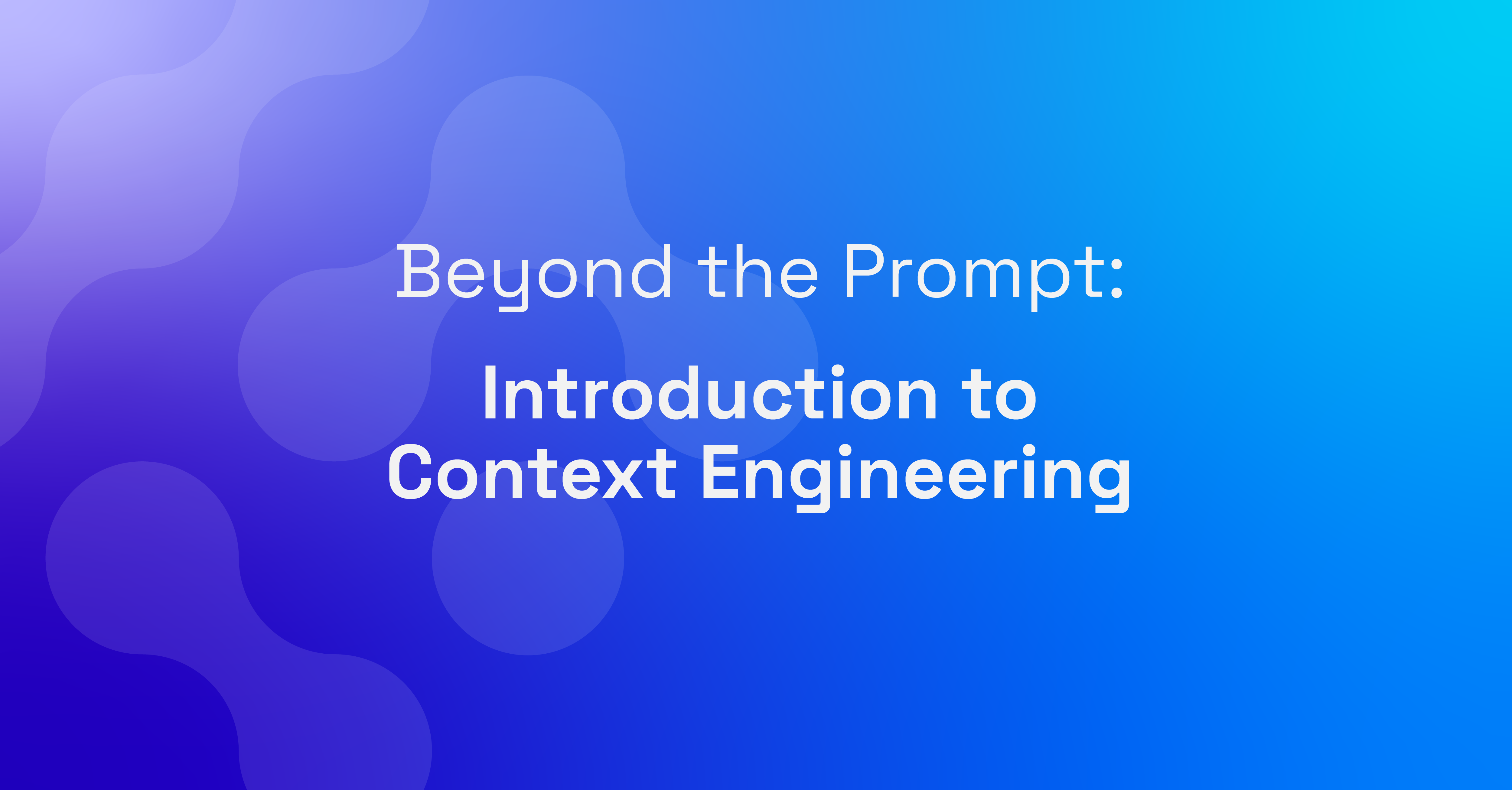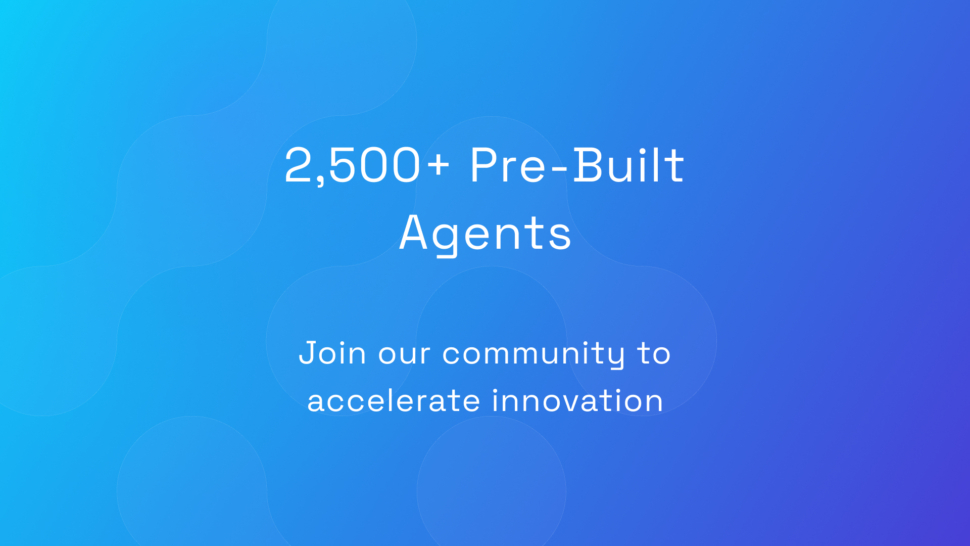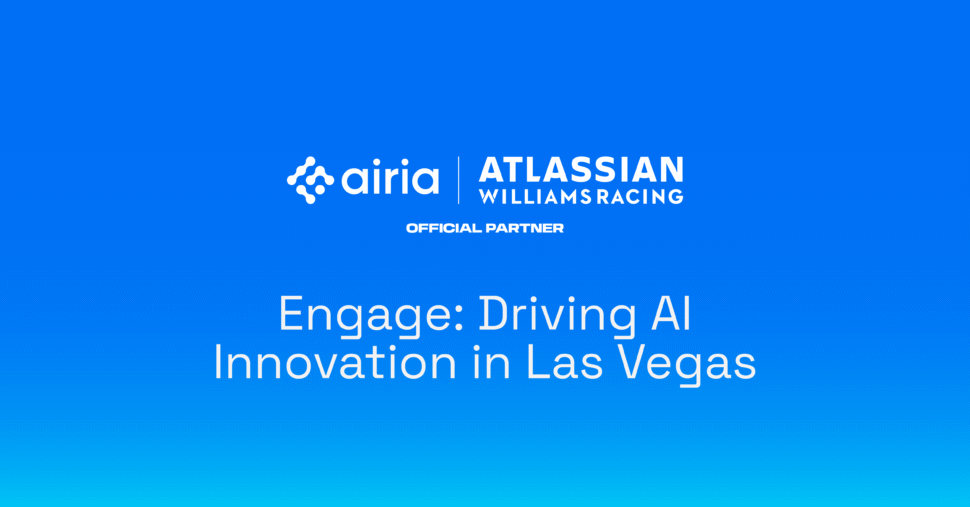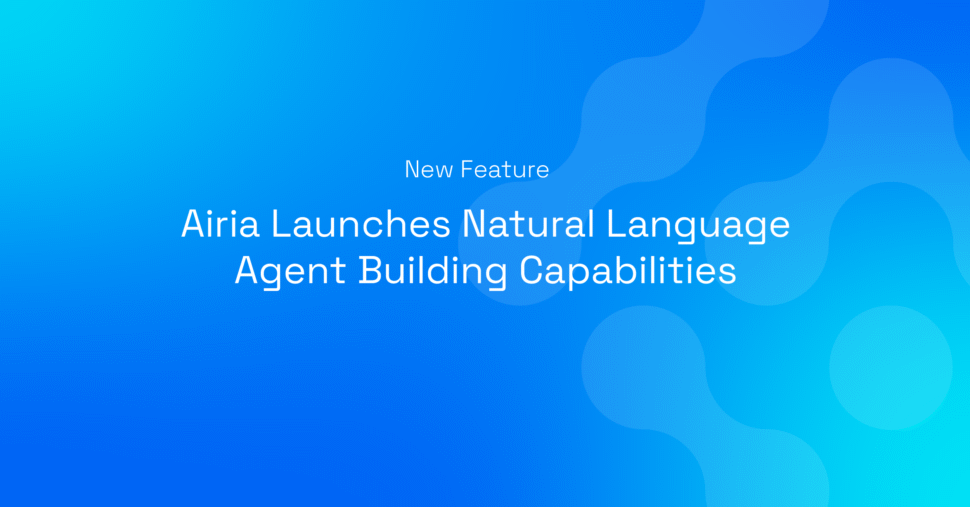Table of Contents
Intro to Context Engineering
As artificial intelligence moves from experimental pilots to production-scale deployment, teams face a fundamental challenge: how to transform AI from a cost center into a strategic business driver. The answer lies not in better prompts, but in context engineering–a strategic capability that’s rapidly becoming the foundation of successful enterprise AI initiatives.
What is Context Engineering?
Context engineering is the strategic discipline of designing and structuring the relevant data, workflows, and environments so AI systems can understand intent, make better decisions, and deliver contextual, enterprise-aligned outcomes without relying on manual prompts.
Where prompt engineering focuses on crafting individual instructions, context engineering builds dynamic systems that automatically provide AI with the right information, tools, and situational awareness at the right time.
The fundamental problem? Prompt engineering treats AI like a single moment in time. You give it instructions; it gives you an answer. But AI agents don’t work that way. They’re dynamic, autonomous entities that need to navigate complex workflows, make decisions on the fly, and access information across multiple systems and sessions.
Prompt Engineering vs Context Engineering
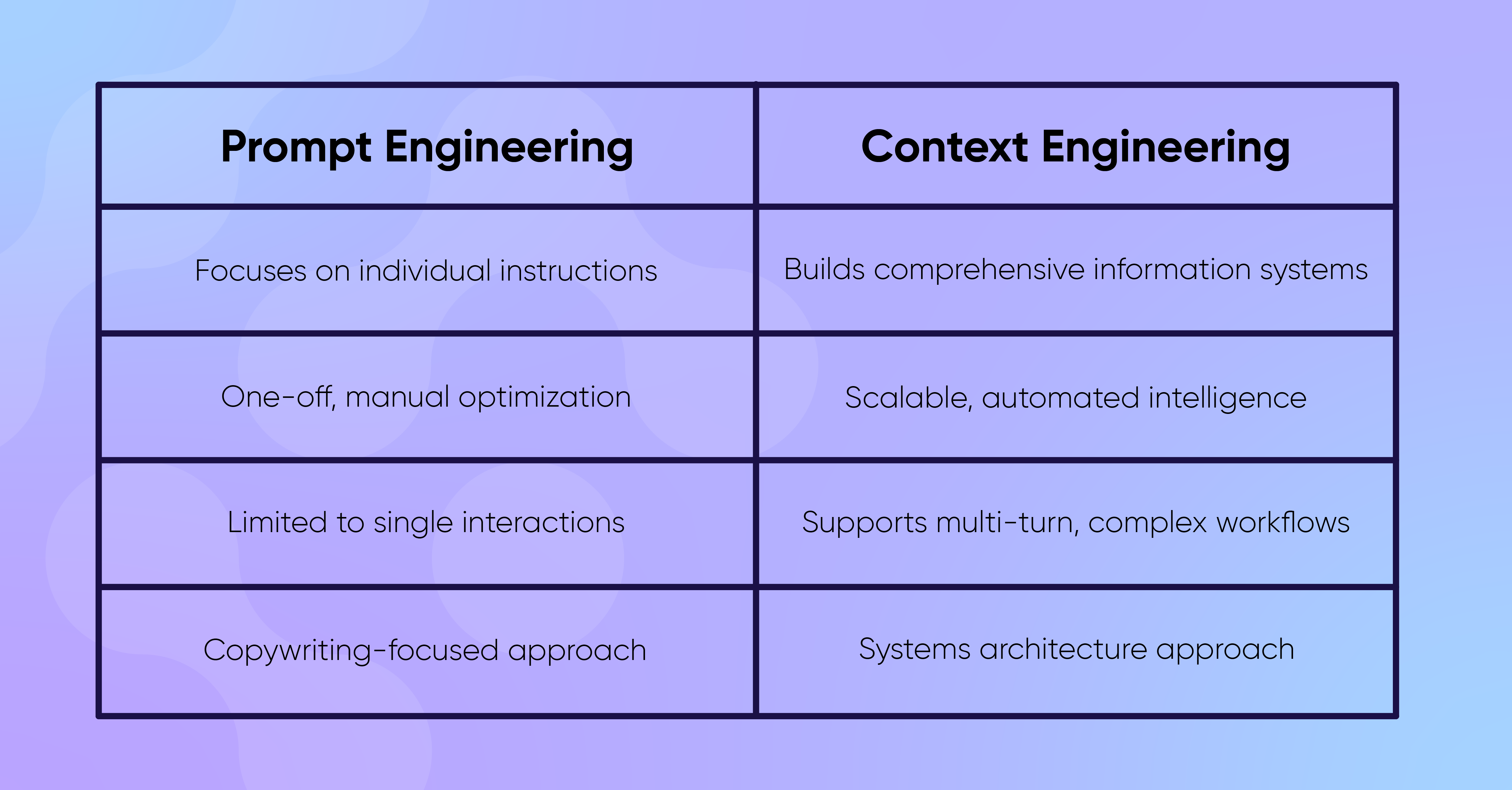
Why Context Engineering is Critical for Enterprise AI Success
Context engineering is the discipline of designing, managing, and optimizing information provided to AI models to improve output accuracy and ensure reliability by enhancing performance through comprehensive systems that dynamically provide AI models with the knowledge and constraints needed for multistep task execution.
If prompt engineering is about writing a good question, context engineering is about designing the environment in which the answer becomes inevitable. Like building an Ikea shelf, it’s about having all the right components, tools, and workspace organized before you even start building.
Context engineering dynamically assembles what the AI needs at each step of a workflow, pulling from enterprise knowledge bases, real-time data feeds, policy frameworks, and memory systems—all while ensuring security, compliance, and cost efficiency.
The Key Components of Context Engineering
1. Instructions
Context engineering includes system-level instructions that establish global behavior, runtime metadata that provides situational awareness, and user inputs that get reconciled with higher-level guidance. It’s about creating coherent, aligned instruction layers that work together seamlessly.
2. Knowledge
Forget the temptation to dump all your enterprise content into one massive index. Context engineering demands targeted, domain-specific knowledge repositories that are optimized for AI consumption.
3. Tools
Context engineering doesn’t just tell AI what to do—it gives AI the ability to act. Through integrations, APIs, and specialized agents, your AI systems become extensions of your business processes. The context layer determines which tools are available when, how they should be invoked, and what constraints apply.
4. Memory
Here’s what separates basic AI implementations from enterprise-grade systems: memory management. Context engineering implements both short-term memory (scratchpads for current workflows) and long-term memory (persistent knowledge across sessions). This enables AI systems to learn from past interactions, maintain user preferences, and build institutional knowledge over time.
5. Guardrails
Autonomous AI without guardrails can lead to serious security vulnerabilities. Context engineering embeds policy compliance, regulatory requirements, and ethical constraints directly into the AI’s operational framework.
Future-Proofing Your Context Engineering Strategy
Agents leverage context engineering to integrate deeper levels of enterprise data and logic. Context engineering directly addresses the core challenges holding back enterprise AI adoption:
- Accuracy and Reliability: By providing AI with comprehensive, well-structured information rather than hoping good prompts will compensate for missing context
- Scalability: By creating reusable, modular context components that work across multiple use cases and workflows
- Trust and Safety: Through embedded guardrails and compliance frameworks that operate at the agent level, not just the output level
Context Engineering as a Competitive Advantage
The shift from prompt engineering to context engineering is more than a technical upgrade — it’s a strategic transformation in how enterprises design and deploy AI. For CIOs, this shift presents both an opportunity and an imperative.
Enterprises that master context engineering will build AI systems that deeply understand their business, adapt to domain-specific needs, and consistently deliver measurable value. This is exactly where Airia is leading the industry. Airia was built from the ground up to operationalize context engineering at scale — with Prompt Layering to structure instruction design into predictable, reusable layers; Smart Scan to transform enterprise content into optimized, retrieval-ready context; and a Secure MCP Gateway that gives agents governed access to internal systems, APIs, and enterprise applications without compromising security. Airia’s persistent memory and embedded guardrails further ensure agents operate safely and consistently, even in complex, regulated environments.
As models become increasingly commoditized, Airia makes the context the differentiator — enabling AI that is accurate, safe, and truly enterprise-ready. For CIOs moving toward an AI-native future, the real question isn’t whether to invest in context engineering — it’s how quickly Airia can help make it a core capability that drives durable, organization-wide impact.
Ready to Move Beyond Prompts?
Meet with one of our experts to learn how your organization can build a scalable, context-driven AI foundation.
